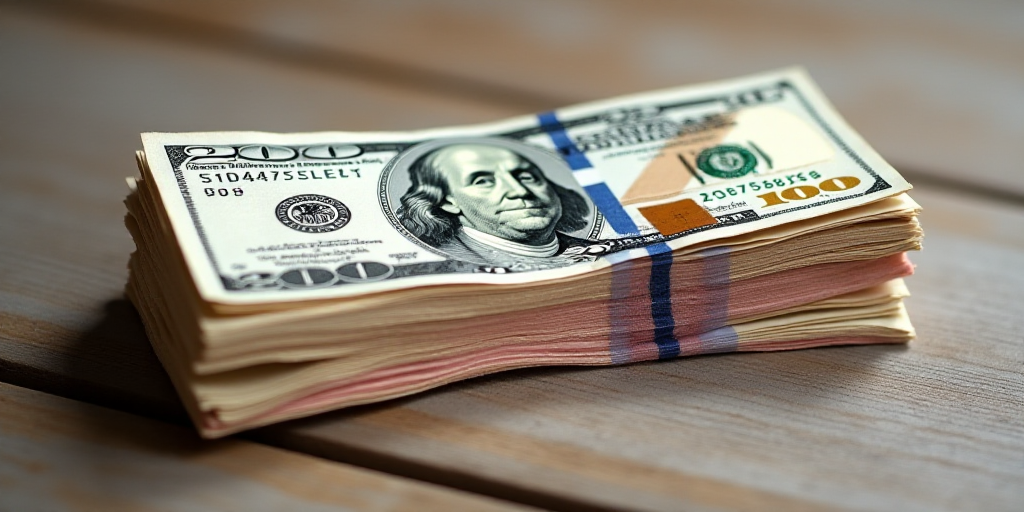Background on the Mexican Peso and its Recent Performance
The Mexican peso has experienced a gain for the second consecutive week against the US dollar, driven by a weakening greenback due to signals that the United States will maintain a protectionist trade stance. This uncertainty surrounding the future of the US dollar as a reserve currency has contributed to the peso’s appreciation.
According to data from Banco de México (Banxico), the peso closed on Friday with a weekly appreciation of 1.18% at 18.6297 pesos per dollar, marking its best level since July 29, 2024, when it was valued at 18.6204 pesos per dollar.
With this appreciation, the peso has advanced for a second consecutive week, accumulating a gain of 2.81%. The DXY index, which compares the US dollar to six reference currencies, has fallen by 1.55% over the past two weeks to 97.18 units.
Comparison with Other Currencies
Among the major currency pairings, the Colombian peso appreciated by 2.72%, the Czech crown by 2.18%, the South African rand by 1.36%, the Israeli shekel by 1.33%, the Brazilian real by 1.20%, the Chilean peso by 1.07%, and the Mexican peso by 1.18% during the week.
On the other hand, only the Argentine peso (-4.45%) and the Swedish krona (-0.78%) depreciated, along with the British pound (-0.48%), the Russian ruble (-0.14%), the South Korean won (-0.12%), the Norwegian krone (-0.04%), and the Peruvian sol (-0.01%) showing minor losses.
Impact of US Fiscal Policy on the Peso
The approval of US President Donald Trump’s fiscal policy, known as “The One, Big, Beautiful Bill,” has also contributed to the dollar’s weakening. This legislation raises the debt ceiling by $5 trillion, exceeding the initial proposal of $4 trillion, allowing the US government’s debt to continue growing.
Gabriela Siller, director of Analysis at Banco Base, commented that the dollar has weakened due to signals that the US will maintain a protectionist trade stance, causing doubts about the future of the dollar as a reserve currency.
She further explained that positive economic indicators in the US labor market have reduced speculation about a recession in the country, which is beneficial for Mexico due to their close economic relationship. The peso was one of the few currencies that gained ground following the publication of the US employment report for June.
Expert Opinions on Peso’s Future
Analysts predict that the Mexican peso will experience a short-term rebound, reaching 18.80 pesos per dollar.
“The exchange rate has reached the support zone at 18.6, and it is likely to halt its decline and show a rebound, with the first resistance level at 18.80 pesos,” explained Georgina Muñiz Sánchez, an analyst at Vector Casa de Bolsa.
She added that current indicator conditions suggest further advances, but for now, 18.80 pesos would be the limit for a very short-term rebound. However, if it breaks through 18.6 pesos, it has significant support at 18.50 pesos.
Declining Confidence in Peso’s Strength Against the Dollar
Investor confidence in the peso gaining ground against the dollar has been declining for a third consecutive week on the Chicago Mercantile Exchange (CME).
Last week, long contracts—favoring the Mexican currency—dropped from 58,000 to 51,300 contracts, a decrease of 11.55%.
Since the week ending June 6, with 64,000 contracts, investor bets on the peso’s strengthening have eroded. The decline in CME contracts favoring the peso since then has been 20.3%.
Key Questions and Answers
- What is driving the Mexican peso’s appreciation? The peso has gained strength due to a weakening US dollar, fueled by signals that the United States will maintain a protectionist trade stance and uncertainty surrounding the future of the US dollar as a reserve currency.
- Which currencies have appreciated or depreciated alongside the Mexican peso? Other currencies that appreciated include the Colombian peso, Czech crown, South African rand, Israeli shekel, Brazilian real, Chilean peso, and Mexican peso. Meanwhile, the Argentine peso, Swedish krona, British pound, Russian ruble, South Korean won, Norwegian krone, and Peruvian sol experienced minor depreciation.
- How has the US fiscal policy impacted the peso? The approval of President Donald Trump’s fiscal policy, known as “The One, Big, Beautiful Bill,” has contributed to the dollar’s weakening by raising the debt ceiling significantly.
- What do analysts predict for the Mexican peso’s future performance? Analysts expect a short-term rebound for the Mexican peso, potentially reaching 18.80 pesos per dollar.
- Why has investor confidence in the peso’s strength against the dollar been declining? Investor confidence has decreased for a third consecutive week on the Chicago Mercantile Exchange (CME) as long contracts favoring the peso have dropped significantly.






